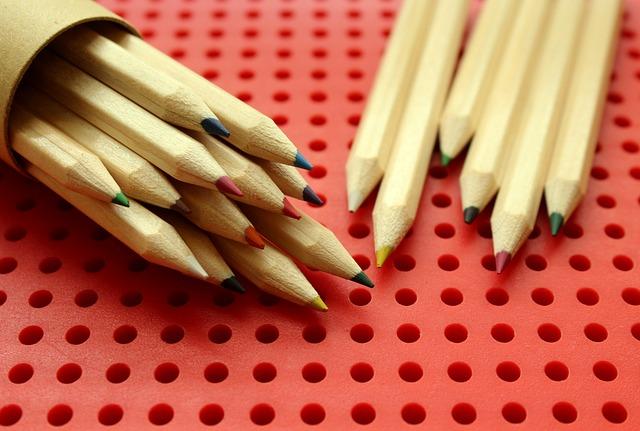In today’s rapidly evolving world, fostering creativity and innovation in children is not merely an advantage but a necessity. As the landscape of education and career opportunities continues to shift towards valuing creative problem-solving and innovative thinking, parents and educators are increasingly seeking strategies to nurture these essential skills from an early age. This article delves into the core principles and practical approaches to cultivating a child’s creative and innovative potential. By examining the interplay between environmental influences, educational practices, and individual traits, we aim to provide a comprehensive guide that empowers parents and educators to unlock the latent talents of the next generation. Through evidence-based insights and actionable strategies, we will explore how to create an environment where creativity and innovation not only thrive but become integral to a child’s development.
Understanding the Foundations of Creative Development
At the core of nurturing a child’s creativity and innovation lies an understanding of their intrinsic ability to explore and express themselves in unique ways. Creative development is not a one-size-fits-all process but a multifaceted journey that requires patience and observation. It’s about creating an environment where curiosity is encouraged and mistakes are seen as learning opportunities. Children need spaces where they can experiment with ideas without fear of judgment or failure. This can be achieved by offering diverse experiences that stimulate their imagination and critical thinking.
- Encourage Exploration: Provide them with a variety of materials and tools that inspire play and discovery.
- Embrace Questions: Foster an atmosphere where asking questions is welcomed and celebrated.
- Support Risk-Taking: Allow them to take calculated risks in their creative pursuits, understanding that failure is a stepping stone to success.
- Model Creativity: Demonstrate creative thinking in your own actions, showing them how to approach problems from different angles.

Creating an Environment that Encourages Exploration and Curiosity
Fostering an environment where children feel empowered to explore and ask questions is crucial for nurturing their creativity and innovation. This can be achieved by creating spaces that are not only physically inviting but also mentally stimulating. Designate areas in your home where children can freely engage in imaginative play, whether it’s a cozy reading nook or a table filled with art supplies. Ensure these areas are clutter-free and offer a variety of materials that can spark different interests and skills.
- Encourage open-ended play: Provide toys and tools that can be used in multiple ways, such as building blocks, art supplies, and musical instruments.
- Cultivate a culture of curiosity: Regularly introduce new topics and experiences, like visiting museums or exploring nature, and encourage your child to ask questions and seek answers.
- Model inquisitive behavior: Demonstrate your own curiosity and enthusiasm for learning, showing your child that it’s okay to not have all the answers and to seek them out.
By prioritizing these practices, you create a supportive environment that not only values but actively encourages exploration and curiosity, laying the groundwork for lifelong creativity and innovative thinking.
Encouraging Problem-Solving Skills and Critical Thinking
To foster a child’s ability to tackle challenges with creativity and ingenuity, it’s essential to create an environment where curiosity is celebrated and mistakes are seen as opportunities for growth. Encouraging open-ended questions and engaging in exploratory discussions are key strategies. Allow your child to ponder questions such as, “What if?” and “Why not?” These inquiries can lead to a deeper understanding of the world and stimulate innovative thinking. Additionally, introducing them to a variety of problem-solving scenarios, such as puzzles and strategic games, can significantly enhance their analytical skills.
- Model Critical Thinking: Demonstrate how to break down complex problems into manageable parts.
- Provide Resources: Offer access to books, tools, and experiences that inspire creative thought.
- Encourage Reflection: After solving a problem, discuss what strategies worked and what could be improved.
- Celebrate Effort: Recognize the process of problem-solving, not just the end result, to build resilience.
Leveraging Technology and Resources for Innovative Learning
In today’s rapidly evolving educational landscape, harnessing the power of technology and resources is crucial for cultivating an environment where creativity and innovation can thrive. By integrating interactive digital tools and platforms, parents and educators can offer children an engaging learning experience that goes beyond traditional methods. Educational apps and games, for instance, can make learning more dynamic and personalized, allowing children to explore topics at their own pace and interest level. Meanwhile, online courses and virtual workshops provide access to a wealth of knowledge and expertise that can inspire and challenge young minds. These resources not only support academic growth but also encourage critical thinking and problem-solving skills.
Beyond digital tools, leveraging physical resources such as maker spaces and STEM kits can significantly enhance a child’s ability to innovate. These resources provide hands-on experiences that are essential for nurturing creativity. Encourage participation in collaborative projects, where children can brainstorm, design, and create with peers, fostering a sense of teamwork and communication. Additionally, expose children to diverse fields and interests through books, documentaries, and field trips, which can ignite passion and curiosity. By thoughtfully integrating these elements into a child’s learning journey, parents and educators can create a fertile ground for creativity and innovation to flourish.



